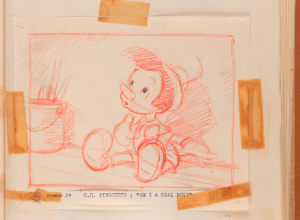"Witness: Reality and Imagination in the Prints of Francisco Goya"
 The Philadelphia Museum of Art will present an exhibition of works by Francisco Goya, featuring selections from the artist’s most ambitious series of prints, made between 1797 and 1825. As a court painter to four successive rulers of Spain, Goya was witness to decades of political turmoil and social change. Witness: Reality and Imagination in the Prints of Francisco Goya includes examples from the Museum’s complete first editions of Los Caprichos (The Caprices), Los Desastres de la Guerra (The Disasters of War), La Tauromaquia (Bullfighting) and Los Disparates (The Follies). These prints address a broad variety of themes, from the spectacle of bullfighting to the chaos and brutality of life in Spain during the Napoleonic wars, and reflect how Goya often blurred the boundaries between documentary realism and expressive invention.
The Philadelphia Museum of Art will present an exhibition of works by Francisco Goya, featuring selections from the artist’s most ambitious series of prints, made between 1797 and 1825. As a court painter to four successive rulers of Spain, Goya was witness to decades of political turmoil and social change. Witness: Reality and Imagination in the Prints of Francisco Goya includes examples from the Museum’s complete first editions of Los Caprichos (The Caprices), Los Desastres de la Guerra (The Disasters of War), La Tauromaquia (Bullfighting) and Los Disparates (The Follies). These prints address a broad variety of themes, from the spectacle of bullfighting to the chaos and brutality of life in Spain during the Napoleonic wars, and reflect how Goya often blurred the boundaries between documentary realism and expressive invention.
Beginning in the 1790s, Goya turned to printmaking as a means of addressing the dramatic changes then occurring in Spanish society and to convey his complex, personal vision of contemporary life. The exhibition begins with his first major series of etchings, Los Caprichos (1799), in which Goya explored provocative subjects such as superstition, anticlerical satire, and prostitution, that would have been deemed unsuitable for his commissioned paintings. Many prints in this series, such as the celebrated etching, “The Sleep of Reason Produces Monsters,” reveal the influence of the Enlightenment, the intellectual movement which championed reason in guiding human thought and social behavior. In this work, often interpreted as a self-portrait, an artist sleeps at his drawing table surrounded by birds and animals that symbolize the forces that haunt his dreams and challenge a rational view of the world.
In his series Los Desastres de la Guerra (1810-1820), Goya provides an intimate view of the many brutal events that occurred during the Napoleonic occupation of Spain and their repercussions. With their unflinching portrayal of violence and despair, these prints illustrate the hardships endured during the war and attest to Goya’s ability to imbue imagined scenes with captivating realism.
Juxtaposed with grim scenes of the war and its devastation are Goya’s thrilling depictions of bullfighting. The etchings from La Tauromaquia (1816) chronicle Goya’s view of the history of the sport, from ancient Spaniards hunting wild beasts to professional matadors in the bullring. While the prints are widely admired for their dynamic portrayal of the quintessentially Spanish practice, Goya was undoubtedly aware of the irony of celebrating such spectacles of violence in the aftermath of war. He revisited the subject a decade later in a magnificent suite of large lithographs known as the Bulls of Bordeaux (1825), which are also on view in the exhibition.
The final section of the exhibition highlights Goya’s most enigmatic series, Los Disparates, (c. 1815-1823). The prints display Goya’s interest in technical innovation as he combined etched lines and gradations of aquatint tone to create surreal compositions that continue to fascinate viewers and scholars.
Danielle Canter, the Margaret R. Mainwaring Curatorial Fellow in the Prints, Drawings, and Photographs department at the Philadelphia Museum of Art, said: “Goya was a remarkably perceptive witness to his time. His graphic works allowed him to grapple with the impact of shifting cultural values, civil unrest, and the war around him. While the prints are intrinsically tied to his experience, Goya’s insightful representations of the human condition and his expressive vision continue to resonate with viewers today.”
Curators
Danielle Canter, The Margaret R. Mainwaring Curatorial Fellow
Shelley Langdale, Associate Curator of Prints and Drawings
Location
Korman Galleries 120-123
Image: A Way of Flying, c. 1815 1823 (published 1864). Francisco José de Goya y Lucientes, Spanish, 1746 1828. Etching and aquatint, Plate: 9 5/8 x 13 3/4 inches (24.4 x 34.9 cm) Sheet: 13 3/16 ? 18 7/8 inches (33.5 ? 48 cm). Philadelphia Museum of Art, Gift of Marion B. F. Ingersoll, 1955.

















